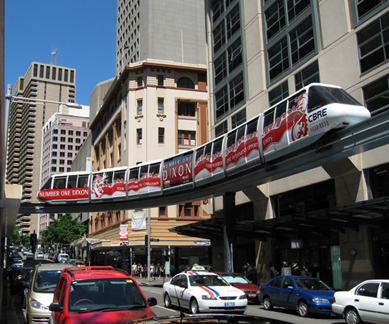Positive signs for public transport
 Here
in Sri Lanka, widely recognized as an emerging economy, we have a
curious case of public transport getting weaker and private transport
getting stronger by the day. A staggering 62,000 vehicles were
registered in July 2015 alone. This trend is likely to continue and
experts say that in just 20 years, there will be three times more
vehicles on Sri Lanka's roads than there are today. Here
in Sri Lanka, widely recognized as an emerging economy, we have a
curious case of public transport getting weaker and private transport
getting stronger by the day. A staggering 62,000 vehicles were
registered in July 2015 alone. This trend is likely to continue and
experts say that in just 20 years, there will be three times more
vehicles on Sri Lanka's roads than there are today.
Buying a car or motorcycle is a basic right and as a democratic
nation, Sri Lanka does not impose any restrictions on vehicle purchases
or usage (for example, there are no congestion taxes for cities). Every
family naturally aspires to own a vehicle. Once you have a motorcycle,
the next step is to buy a small car and then, a bigger car. It is a
never ending circle. But the result is an explosion in vehicle numbers
that our existing roads cannot handle.
Downside
The downside is that more people are getting away from public
transport. Actually, half of all journeys are now done by private
transport. The moment someone buys at least a motorcycle, he or she
feels "liberated" in the sense that public transport is no longer
needed. But with rush hour travel speeds especially in Colombo reaching
an abysmal 8 kph, this is obviously not a very wise step. One can just
imagine the amount of fuel being wasted in traffic jams and given the
fact that we are a net oil importer, it makes more sense to depend more
on public transport. In fact, in many developed countries people do not
wish to own a car because the public transport network is so good and
there are many associated costs such as parking and congestion charges
which do not make car ownership worthwhile.
But the state of local public transport leaves a lot to be desired.
The bus and train network is far from satisfactory. Private buses, a law
unto themselves, are a primary cause of accidents. It is hard to find
one at night and they shun most uneconomical rural routes. Our trains
still run on diesel when most other countries have gone fully electric
and the condition of some carriages is far from ideal. There is no
coordination between bus and train timetables either. In short, there
has been little investment in both bus and train infrastructure.
Rectified
Still, the best answer is public transport if these matters can be
rectified. The focus should essentially be on the Western Province since
it is the most crowded province (in terms of population as well as
vehicle numbers). In this context, the much talked-about Colombo
Metropolitan Regional Transport Master Plan must be more widely
publicized and debated.
|

Monorail. Picture: Wikipedia |
This is not a short term or inexpensive project. Implementation will
require more than Rs. 1,700 billion over 20 years (if the project begins
this year, it should be completed by 2035). This will spread across all
modes of transport with buses and Bus Rapid Transit (BRT) getting a 12%
share. Bus rapid transit (BRT, BRTS, busway) is a bus-based mass transit
system. A true BRT system generally has specialized design, services and
infrastructure to improve system quality and remove the typical causes
of delays. BRT is not even a new idea - The first BRT system was the
'Integrated Transportation Network' in Curitiba, Brazil, which entered
service in 1974. As of October 2014, 186 cities in all continents have
implemented BRT systems.
Under this plan, railway will take 33%, monorail 17% (akin to
Bangkok's Skytrain) and roads 23% (more expressways and rural roads are
already under construction). City planning will also be an inherent
part. The systems could be gradually introduced to other provinces such
as Central and North Western, which are also facing a traffic crunch. We
do not have look far to see what good public transport systems can
achieve - many Indian cities have successfully implemented BRT and other
systems that have taken thousands of vehicles off the roads.
Efficient
The aim should be developing a high quality public transport that
enables faster, cheaper, cleaner, more efficient transport. Completely
new rail routes will have to be introduced and this is a golden
opportunity to go fully electric - rail lines have been proposed to
Malabe and Horana, two of the most congested road links. If there is a
very good train service, chances are that many people will opt to keep
their cars at home at least on weekdays. We hope that the new plan will
also take into account developments with regard to autonomous
(self-driving) cars and 'intelligent' roads which can communicate with
cars.
The authorities should not forget the "other" public transport
service - taxis. Right now, the majority of taxis comprise three
wheelers, more than 12,000 of which were registered in July this year.
Three wheelers are not an ideal solution and proper cars are much safer
and more comfortable. There is not much of a difference between their
rates either. A proper car based taxi service is essential for a city
that strives for hub status.
We have seen how the recent tax cut on small cars has already
resulted in more cars entering the roads as taxis. Further tax
concessions should be granted for companies wishing to import small cars
for use as taxis. It has also been suggested to grant loans for three
wheeler drivers to purchase cars, which should also help in phasing out
three wheelers.
Integrated
A better and integrated public transport system will benefit the
country in so many other ways. Fuel consumption can be cut down, there
will be less pollution, more man-hours can be saved for productive work,
the accident rate will come down as there are fewer vehicles on the
roads and people will also be able to engage in leisurely pursuits too
with the time thus saved.
Our authorities should study the successful implementation of mass
transit systems in other countries, especially developing countries, to
take certain cues. It might not be possible to "transplant" all those
solutions to our roads, but at least some solutions will be viable
because public transport is the wave of the future. |

